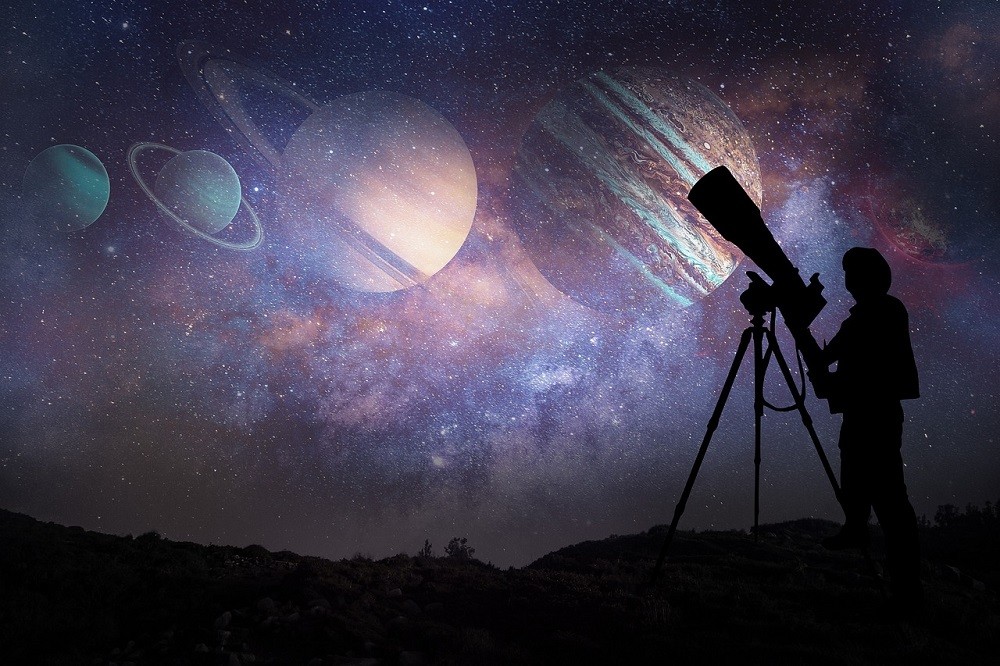
File photo: Mercury, Jupiter, Mars, Venus, and Uranus will align and appear in a row in the night sky. Image via pixabay.com/Victoria_Watercolor
Tomorrow, Monday, March 27, 2023, Mercury, Jupiter, Mars, Venus Uranus will line up and appear in succession in the night sky.
Annually, March is when all 110 deep-sky objects cataloged by French astronomer Charles Messier become visible, according to science media outlet Space.com.
- A deep-sky object is any astronomical object that is not part of a solar system.
In honor of the French astronomer, amateur astronomers from all over the world will participate in the Messier Marathon this week.
During this time, they try to locate as many of the 110 beings as possible.
How to get the best experience
Those who want to join the adventure are advised to find an observation post with a clear view of the western horizon, according to Space.com.
The website also recommends binoculars with a 7x magnification and a diameter of 33mm or 50mm (7×35 or 7×50).
Watching time is short, so advance preparation is vital. The planets will be visible about 20-25 minutes after sunset.
Learn about the planets
The first two planets to appear will shine brilliantly. Although Mercury will shine a little less bright than the brighter star Sirius, according to Space.com.
Mercury will slowly move away from the sun, making it more visible.
To the left of Mercury, Jupiter will shine twice as bright as it does. However, Jupiter will turn toward the sun, which may block its view.
Venus will slowly rise for viewers in the Western Hemisphere, making it easier to spot. A few months from now, Venus will be visible about an hour after sunset, according to Space.com.
Mercury and Jupiter will swap positions on Monday, according to science news agency LiveScience.com.
To identify Mars, look for the dense crescent shape to the left of the moon. The yellow-orange color is a useful additional identifier.
According to LiveScience.com, both Venus and Mars can be seen without binoculars or any lenses.
To the left of Mars, the star cluster M35 of the constellation Gemini will be visible. The cluster will appear the size of the moon, according to Space.com.
Uranus will be visible, although it is more difficult to see than the others, in the upper left part of Venus. There should be a slight green on the planet, according to Space.com.
Neptune will be visible next to Uranus. It will be farthest from the Sun, according to Space.com.
with information from Jerusalem Post
190 countries greet the Earth and turn off the lights in the monuments – today and the “visit” of the asteroid 2023 DZ2
Follow HELLAS JOURNAL on NEWS GOOGLE
Hilasjournal – newsletter

“Total alcohol fanatic. Coffee junkie. Amateur twitter evangelist. Wannabe zombie enthusiast.”





More Stories
Is this what the PS5 Pro will look like? (Image)
Finally, Windows 11 24H2 update significantly boosts AMD Ryzen – Windows 11 performance
Heart Surgeon Reveals The 4 Things He ‘Totally Avoids’ In His Life